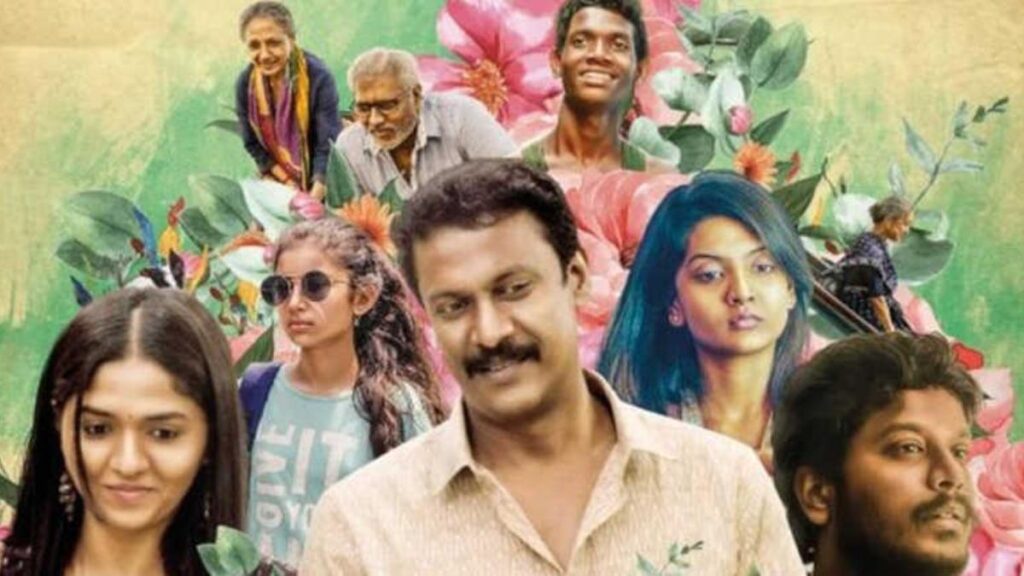Sillu Karuppatti – A Heartwarming Anthology of Love and Humanity

Introduction
Tamil cinema has often been celebrated for its versatility in storytelling. While commercial blockbusters dominate the industry, independent filmmakers have consistently experimented with unconventional narratives that speak directly to the heart. One such gem is Sillu Karuppatti, a 2019 Tamil-language anthology directed by Halitha Shameem. The film, a collection of four distinct stories, is bound together by a single theme — love in its purest, simplest, and most humane form.
Unlike the loud romances of mainstream cinema, Sillu Karuppatti takes a delicate approach, exploring how love blossoms in unexpected situations, across age groups, social classes, and personal struggles. With its raw emotions, charming characters, and sensitive storytelling, the film became a surprise critical success, resonating with audiences far beyond Tamil Nadu.
This article provides an in-depth look at Sillu Karuppatti, examining its stories, characters, themes, cinematic style, and cultural impact.
Background of the Film
The Director – Halitha Shameem

Halitha Shameem, a filmmaker who carved her own niche in Tamil cinema, is known for her independent style and unconventional storytelling. With Sillu Karuppatti, she created a film that breaks away from formula-driven romances. Instead of portraying love as glamorous, she grounded it in reality — in everyday struggles, tender moments, and raw imperfections.
Production and Release
The film was produced under the banners of Venkatesh Velineni’s Divine Productions and distributed by Suriya’s 2D Entertainment, which helped the film gain a wider audience. Released in December 2019, it stood out during a time when action films and masala entertainers dominated theaters.
The title Sillu Karuppatti translates to “Palm Jaggery Candy,” symbolizing the natural sweetness of life and love — unrefined, organic, and soul-stirring.
Structure of the Film – Four Stories, One Emotion
Sillu Karuppatti is divided into four short films, each exploring a unique dimension of love.
1. Pink Bag
This story follows the unlikely friendship between a young ragpicker and a wealthy, lonely woman. The boy collects recyclable items and notices the sadness in the woman’s eyes. Despite their vast social differences, they develop a bond of mutual kindness and understanding.
- Theme: Compassion beyond social barriers.
- Highlight: The innocence of the boy and his ability to connect emotionally with the woman reflects the purity of love that transcends wealth or class.
2. Kaaka Kadi
A young man diagnosed with cancer struggles with his mortality until he meets a cheerful, free-spirited girl. Their conversations transform his perspective, reminding him that life is not about its length but about the moments that bring joy.
- Theme: Love as a healing force during despair.
- Highlight: The bittersweet humor and warmth of their interaction make this one of the most touching stories in the anthology.
3. Turtles
This chapter focuses on an elderly couple, played by Leela Samson and Kravmaga Sreeram, who find companionship in the twilight of their lives. Their walks, conversations, and shared silences redefine what love means in old age.
- Theme: Romance has no expiration date.
- Highlight: A poignant reminder that companionship and intimacy matter as much in old age as they do in youth.
4. Hey Ammu
The final story portrays a married couple struggling with emotional distance. Through subtle gestures and rediscovering the small joys in their relationship, they realize that love still exists between them despite routine and misunderstandings.
- Theme: Rekindling love in long-term relationships.
- Highlight: A realistic take on marital struggles and the importance of communication.
Themes and Symbolism

1. Love in All Forms
The anthology beautifully captures how love appears in different phases of life — childhood, youth, adulthood, and old age. It is not confined to romance alone but extends to kindness, empathy, and companionship.
2. Class and Social Barriers
The first story highlights how emotional connections can transcend wealth and poverty. Love and compassion, the film suggests, are universal.
3. Mortality and Life’s Fragility
In Kaaka Kadi, the looming presence of death emphasizes the importance of living fully and embracing love while there is time.
4. Everyday Realism
The anthology avoids melodrama and instead thrives on everyday conversations, natural silences, and understated gestures — making it deeply relatable.
5. Symbolism of “Palm Jaggery”
Just like jaggery, love in the film is raw and unprocessed — it doesn’t require refinement or extravagance, only authenticity.
Performances
- Samuthirakani as the cancer patient in Kaaka Kadi delivered one of his most vulnerable roles, balancing humor and pathos.
- Leela Samson in Turtles brought dignity and grace to her portrayal of late-life romance.
- Sunaina and Manikandan added charm and authenticity to their segments.
- The child actor in Pink Bag stood out for his innocence and natural performance.
Each actor, irrespective of screen time, felt real and unpolished, which enhanced the film’s sincerity.
Cinematography and Direction
The film’s cinematography is minimalistic, emphasizing natural lighting and real settings rather than polished studio backdrops. Halitha Shameem’s direction relies heavily on conversations, body language, and silent moments rather than dramatic twists.
The framing of scenes — an old couple walking, a boy looking into a window, or a husband quietly observing his wife — amplifies the emotional resonance of the stories.
Music and Sound Design
The background score, composed by Pradeep Kumar, is soft, soothing, and perfectly complements the film’s tone. Instead of dominating the narrative, the music gently enhances the emotions on screen. Each story has its own subtle musical identity, yet all blend seamlessly into the anthology.
Reception and Critical Acclaim
Upon release, Sillu Karuppatti was praised by critics and audiences alike.
- Critics applauded its refreshing take on love, calling it a “soul cleanser” in Tamil cinema.
- Audiences resonated with its simple storytelling and emotional depth, often calling it one of the best anthology films in Indian cinema.
- Many compared it to world cinema’s best slice-of-life anthologies, noting that it avoids clichés while staying universally relatable.
It was screened at several film festivals, further cementing its reputation as a significant work in contemporary Tamil cinema.
Cultural Significance
Sillu Karuppatti marked a shift in Tamil cinema, proving that small-budget films with authentic storytelling can create as much impact as big-budget entertainers. It also opened doors for more anthology projects in the Tamil industry, inspiring filmmakers to explore unconventional narratives.
Conclusion

Sillu Karuppatti is not just a film — it is an experience. By presenting love in its rawest forms, stripped of glamour, Halitha Shameem created a timeless anthology that speaks directly to the soul. Each story acts like a piece of palm jaggery — simple, sweet, and nourishing.
In a world often filled with noise, chaos, and superficial portrayals of love, Sillu Karuppatti serves as a gentle reminder that true love lies in kindness, empathy, companionship, and everyday connections.
It is a film that lingers long after the credits roll, making us reflect on our relationships, our mortality, and above all, the beauty of love in all its forms.
